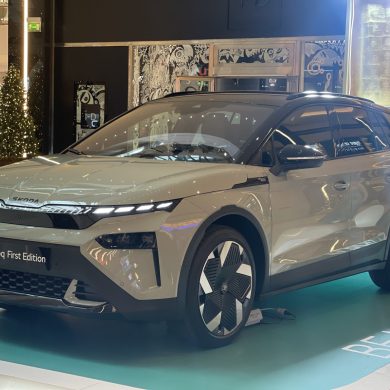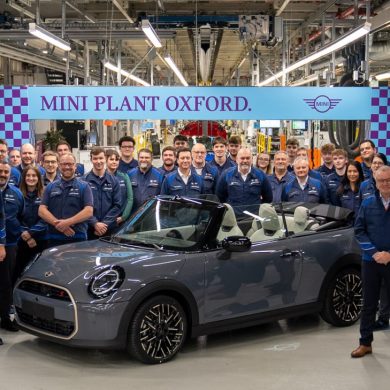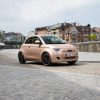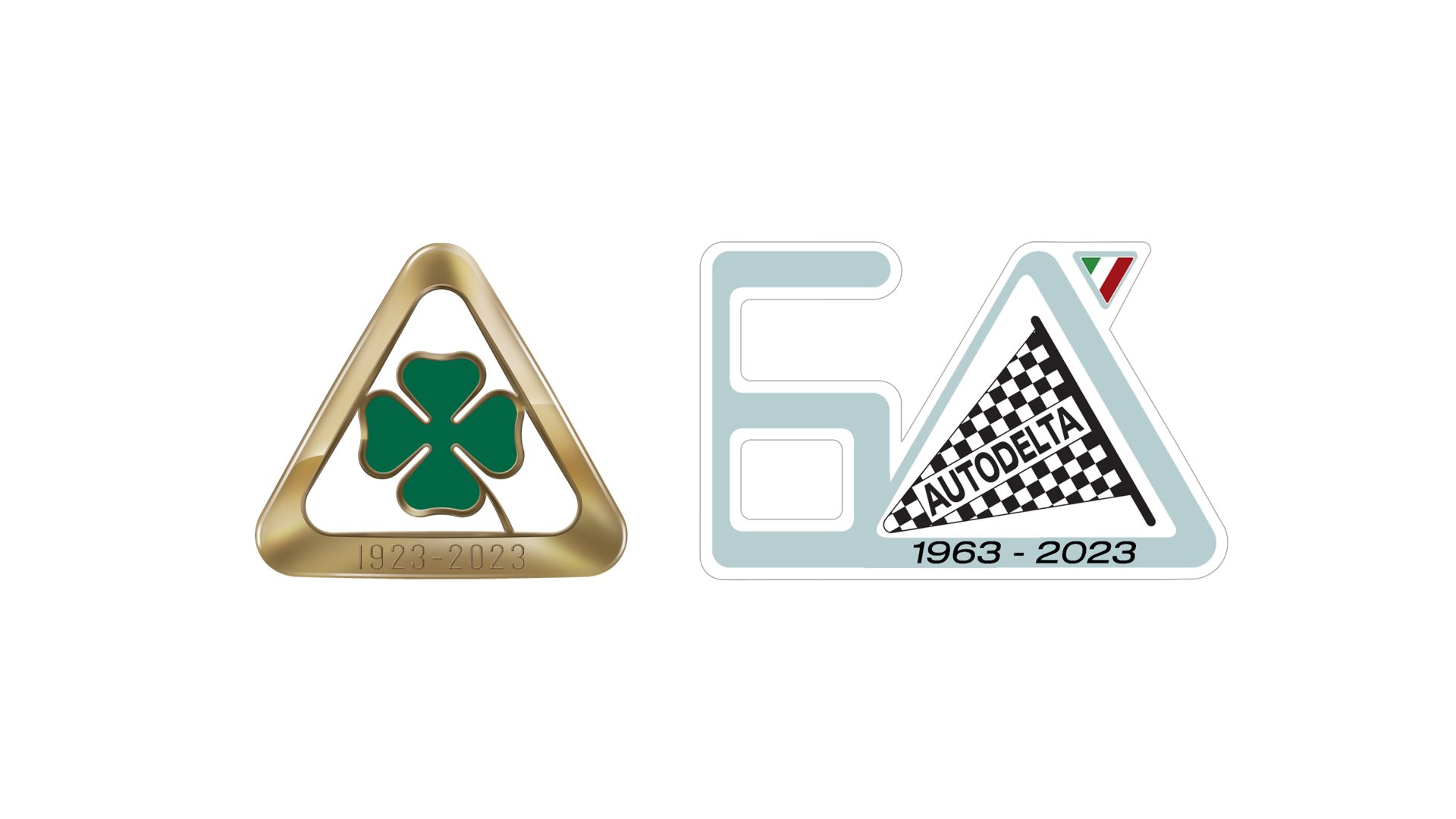
Two extremely important anniversaries are celebrated this year by Alfa Romeo, with the legendary Quadrifoglio symbol reaching 100 years of life, while the equally legendary Autodelta racing division celebrates its 60th anniversary.α his birthday. These are two pivotal points in the history of the brand that has been expressing the Italian sporting character since 1910. Alfa Romeo unveils two new logos, which, among other things, will accompany the events planned to celebrate these anniversaries.
The logos were designed by Centro Stile Alfa Romeo and are a modern version of the classic ones, aiming to mark the brand's path towards redefining its sporty character for the 21st century.ο century. The legendary Quadrifoglio at 100 years old retains its dynamism and elegance, now with a new colour palette. Similarly, the Autodelta logo, with targeted changes, is renewed, but retains its classic character, honouring the history of the racing team.
In particular for the 60α To celebrate the Autodelta's birthday, Alfa Romeo is organising a special event for fans of the brand on 5 March, the day the racing division was founded, at the Museum in Arese. Similarly, on 25 June, as part of the brand's birthday celebrations, Quadrifoglio Day will also be held at the Museum.
Quadrifoglio: a symbol of the Italian fighting spirit
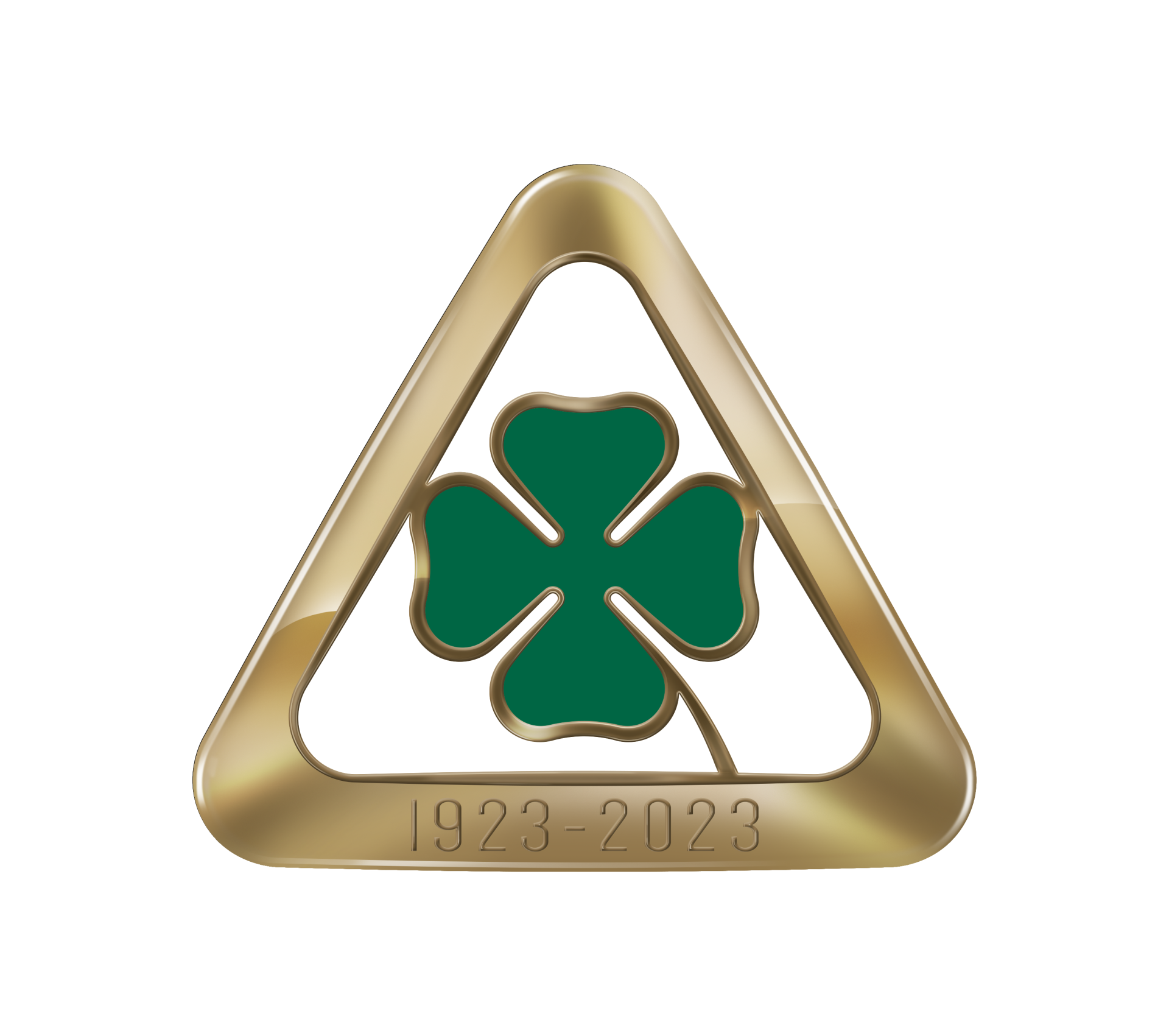
The constant search for excellence in racing and then transferring this experience to production cars. This is the Alfa Romeo philosophy expressed by the Quadrifoglio, the legendary symbol that has accompanied the brand's top creations in racing and production cars since 15 April 1923.
The first Alfa Romeo to carry the Quadrifoglio on its bodywork was Ugo Sivocci's RL "Corsa", which won the 14th Targa Florio in 1923, the first victory of a total of ten won by the marque in this premier event. The same symbol of good fortune adorned Gastone Brilli-Peri's "P2" when he won the "World Motor Racing Title" in 1925 at Monza, the first of Alfa Romeo's five world titles. The Quadrifoglio was also the symbol that distinguished Alfa Romeo's "factory" racing cars in the late 1920s from those of Scuderia Ferrari, which had the distinctive "cavallino rampante" as their symbol.
In 1950 and 1951, Giuseppe "Nino" Farina and Juan Manuel Fangio drove the Alfa Romeo 158 and 159 (the legendary "Alfetta") to win the first two Formula 1 World Championships. Then, during the 1960s, the Quadrifoglio featured on the "TI Super", the race-ready "civilian" Giulia, and was then combined for several decades with the Autodelta blue triangle, from the "GTA" to the various versions of the "33", such as the World Champions, "33 TT 12" (1975) and "33 SC 12" (1977).
Alfa Romeo's racing activity continued into the 1980s. After returning to Formula 1 in 1980, it triumphed in the touring car championships with the GTV 6 2.5 and then in the DTM with the 155 V6 Ti and in the European Touring Car Championship with the 156 Superturismo.
From the 1960s to the 1980s, high-performance production models carried the Quadrifoglio on their bodies, such as the Giulia Sprint GT Veloce and the 1750 GT Veloce. In the 1980s in particular, versions were also named after the legendary symbol, such as the 33 Quadrifoglio Verde and 164 Quadrifoglio Verde. It is worth noting that between the 1970s and 1980s, the Quadrifoglio was available in two versions, 'Verde' (green) for the sportier versions and 'Oro' (gold) for the more luxurious versions.
Over the years, the letter "Q" has become part of the Alfa Romeo alphabet, characterising the most innovative technical solutions, such as the famous Q4 all-wheel drive system, the Q2 limited-slip differential and the Q-System and Q-Tronic transmission systems.
The Mito (2008) and Giulietta (2010) marked the return of the Quadrifoglio to the new century, while the launch of the Giulia Quadrifoglio in 2015 created another legendary model for the brand. Equipped with a bi-turbo 2.9-litre V6 engine producing 510bhp and top road handling, the Giulia Quadrifoglio set a new lap record for its class on the Nürburgring with 7'32", an example followed by the top version of the brand's first SUV, the Stelvio Quadrifoglio.
From Autode: the legendary racing division of Alfa Romeo
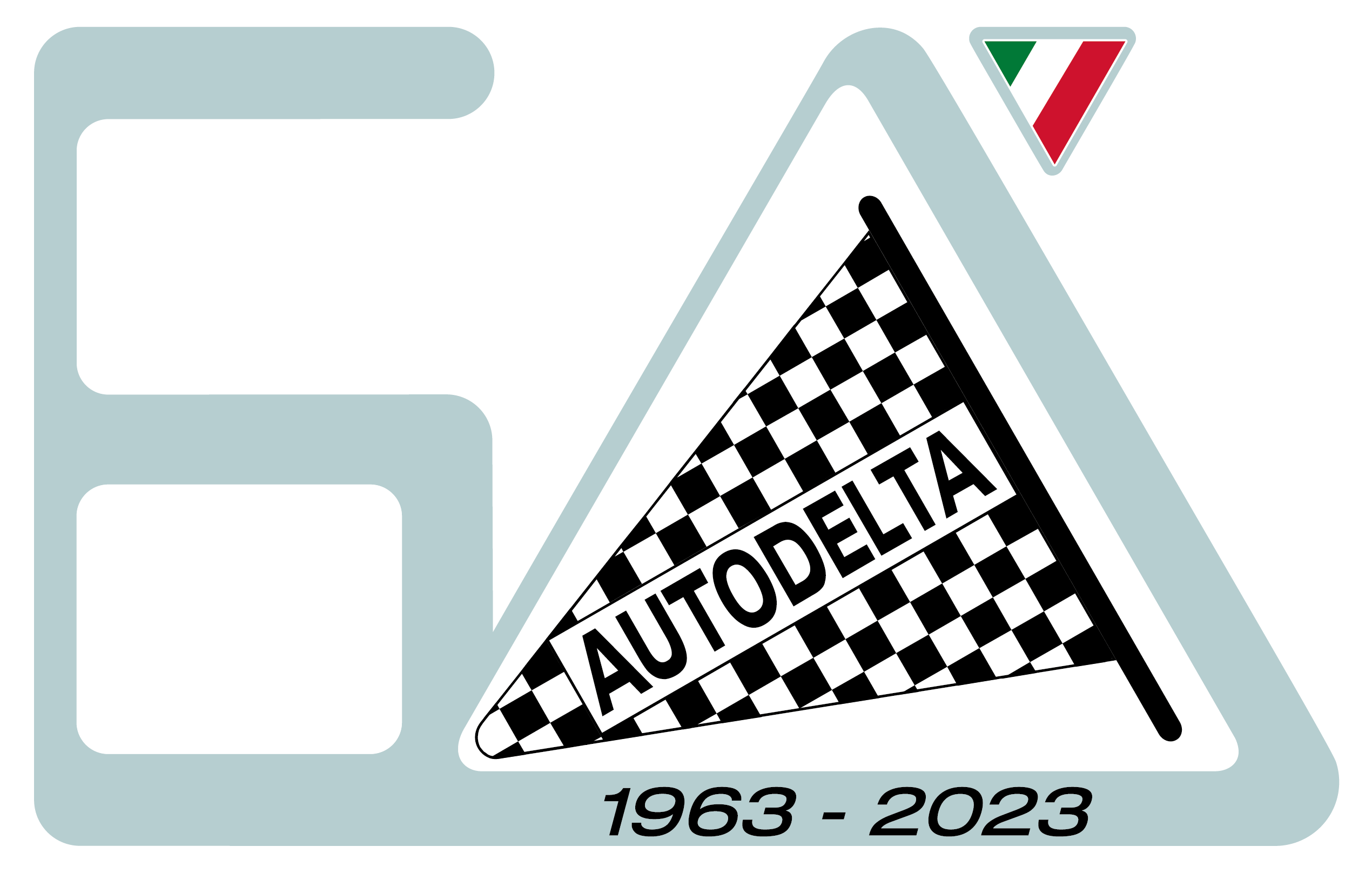
On March 5, 1963, Carlo Chiti and the Chizzola brothers founded a small company based in Feletto Umberto in Udine, on the northeastern border of Italy. The aim was to collaborate with Alfa Romeo to build the Giulia TZ, a compact GT designed by Zagato based on the Giulia's mechanical parts and a special tubular chassis, from which the model took its name TZ (Tubolare Zagato). This was the starting point for one of the most beautiful chapters in racing history, with the fledgling company soon evolving into the official racing division of Alfa Romeo. The Italian marque in 1965 bought Autodelta with the aim of making an official return to racing, having retired from motorsport as an official team after winning its second Formula 1 title with the Alfetta in late 1951.
For this reason, Alfa Romeo preferred to create an independent organisation that would not be involved with the production department and would therefore have the possibility of greater flexibility and faster decision-making. The general manager of the effort was appointed the charismatic engineer Carlo Chiti, who moved Autodelta to some warehouses in the Settimo Milanese area, near Arese, Milan. There some of Alfa Romeo's most famous models would come to life, such as the 1965 Giulia Sprint GTA, which won hundreds of victories and dozens of titles, but was also the first touring car to achieve a sub-10 minute time on the legendary Nordschleife circuit of the Nürburgring.
In 1967 Alfa Romeo took the big step into the "prototype" class, a class with international recognition, with the 33/2 winning its first distinction in its first race at Fléron in Belgium. The following year, Autodelta prototypes won their class at the 24 Hours of Daytona, the 1000km Nürburgring, the 500km Imola, and the 24 Hours of Le Mans. The 33 TT 12 of 1975 (probably the most successful year in Autodelta history) was also a stunning race car. With it Autodelta won the World Title, a success they repeated two years later with the 33 SC 12. Thereafter Autodelta took over all projects involving Alfa Romeo's involvement in racing, from Alfasud preparation to Formula 1. In 1984 Carlo Chiti left the company and a year later Autodelta ceased operations. In addition to the highly successful race cars, Autodelta was also the ideal school for many successful racing drivers, such as Andrea De Adamich, Arturo Merzario, Andrea De Cesaris, Jochen Rindt, Jacky Ickx, Jean Pierre Jarier and Mario Andretti.



